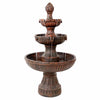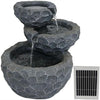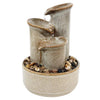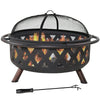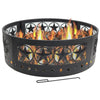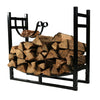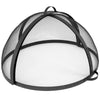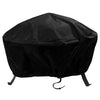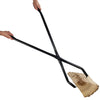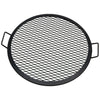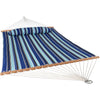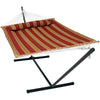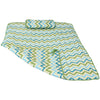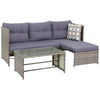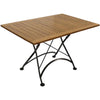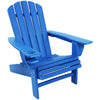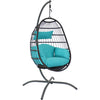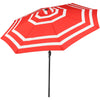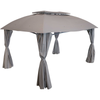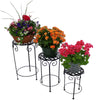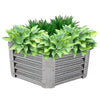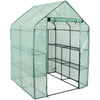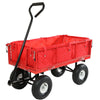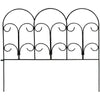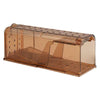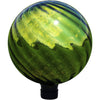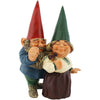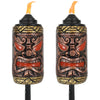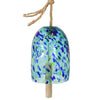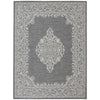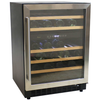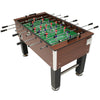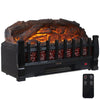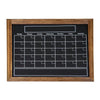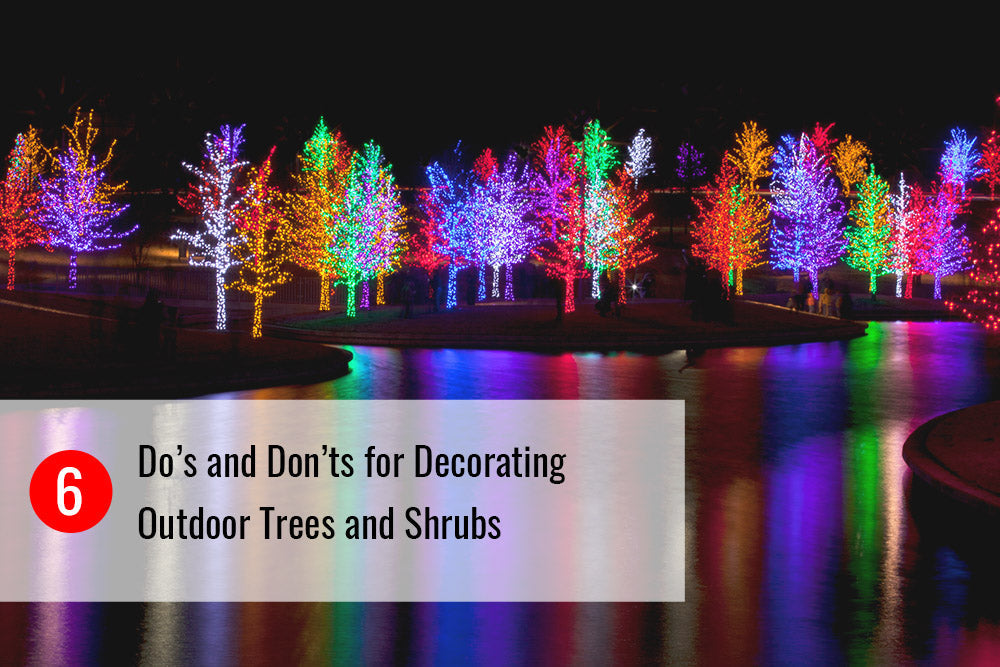Let us set the atmosphere: as the seasons begin to dip into autumn and the sun begins to fall below the horizon, friends, and family gather around the fire pit for a bit of warmth and relaxation after long days. There’s the smell of burnt marshmallows and ashes, small talk and quiet conversations are all around, the crickets and frogs chirp into nighttime… and there’s one person who is constantly running back and forth to grab wood, lighter fluid, kindling, and other materials desperate to keep the fire burning longer than 15 minutes at a time. No one wants to be in charge of that task, but the good news is that with the right fire pit knowledge, you don’t have to keep running back and forth to keep the flames alive. All it takes to build the perfect, late-night, campfire experience is a few tips and tricks to keep your firewood burning longer.
First, wood vs. gas fire pit functions
A gas fire pit requires propane gas to be lighted (as the title suggests). To keep this fire burning longer, you first have to make sure that you have gas to fuel it. Many of the suggestions below are targeted more for wood-burning fire pits as they require more maintenance, cleaning, and setup compared to a gas fire pit. Besides, who can deny that the smoky smell of wood is a nostalgic sensation unlike any other? Of course, both are great options to keep your backyard space warm and inviting. And, with a gas or wood-burning fire pit, it’s always best to use precaution first and then research new ways to use it better.
Here are 10 tips and tricks to keep your fire burning for hours:
1. Let’s analyze the weather conditions
Sometimes, Mother Nature herself can hinder your fire burning opportunities. Obviously, if it is raining, you’re going to have a hard time tending to your fire. However, even high-moisture conditions with high humidity can make things difficult. It is easier to control a fire and keep it burning longer during dry conditions. Know your area and maintain your fire pit accordingly. If you can move your fire pit or create a dryer environment, it will help keep your fire burning longer.
If you live in California, for example, know the possible consequences of burning during a drought or dry conditions. Follow proper protocol, be smart, and be safe (those three tips apply to us all, too).
2. What direction is the wind blowing?
Your fire pit location can make a difference in burning long-lasting fires. If your fire pit is located out in the open, it’s easy for even subtle wind gusts to extinguish the flames. Often it’s recommended to have some sort of wind-breaking surface nearby that stops the wind before it gets to your fire. A wind-breaker can be a wall of a shed or home, or a thick layer of trees or bushes. But don’t forget to keep your fire at least 10 feet away from anything flammable including brush, dry leaves, wooden structures, or your home. (The goal is to have a lasting fire, not completely destroy your surrounding environment.)
3. Make sure to keep your materials dry
If you don’t use your stack of wood very often, it can be easy to forget to keep it dry for those impromptu bonfire nights. Especially as the temperature dips in the cooler seasons, it’s best to get your firewood in order so you’re prepared for all fire pit occasions!
Dry firewood is essential to having a fire that lasts longer. Just like humidity in the air can hinder the length of your burning, so can moisture that has been soaked or trapped inside the wood itself. An easy way to eliminate the chances of this happening is using a firewood log rack. This makes it easy to keep your wood from directly being in contact with the ground and the moisture that comes from it. Log racks also help to keep your firewood organized and clean. Having a rack also makes it easier to keep wood near your fire for convenience when more wood is needed for the fire (some log racks even have wheels for easy maneuvering around any area). Second, it’s great to invest in a log rack cover. Covers keep your firewood protected from the elements year-round and are essential to keeping your wood dry for the best fires, always.
4. Look at the type of wood you’re using to burn
To get a fire started, you need kindling (like dry leaves or newspaper) that burns fast and hot. Thin pieces of dry wood also work to keep the flame steady for a few minutes. However, after that initial spark, it’s important to know how different types of wood burn and why.
Ash, oak, maple, cherry, birch, and beech wood are types of lumber that are considered “slow burning.” Walnut, hickory, and hornbeam are also slow-burning woods because they are all hardwood that has more wood packed within each square inch. Therefore, it takes the fire longer to get through. These types of wood, in comparison to softwoods like pine, fir, and evergreen, burn slower, cooler, and last for hours.
5. A combination of wood types is best
While hardwood is better to keep your fire burning longer, remember not to suffocate the flames with too much stacked wood. The base of the fire needs some airflow to keep up the heat, but it also needs extra help to get started. Remember to use a combination of dry kindling and softwood to start out. Then, you can switch over to hardwood to relax in the warmth for longer.
6. Remember that moisture inhibits fire growth
One easy tip that helps keep your fire burning longer is to dry out your pit before you start using it. When a pit is outside, taking in all the elements outdoors, your fire pit may be taking in more moisture than you realize. Be sure to take a towel to clean out any remaining residue or moisture that may be inside. This is also a good idea just to maintain upkeep of your fire pit for long-lasting use.
One way to avoid moisture getting inside your fire pit is to invest in a fire pit cover. This ensures safety against the elements outdoors during storms and other weather conditions. Keeping your fire pit safe, clean, and dry is easy with a cover that fits just right.
7. Air and proper ventilation is essential for any successful fire
The main ingredient we always forget that is necessary for any successful fire is oxygen. It’s important to not suffocate the flames. The unwritten rule is that 1/2 an inch of wood burns for an hour. If your wood is thicker than 6 inches, then every inch burns for an hour. Keep that in mind when you start stacking your wood.
Different stacking styles can help with proper air ventilation as well. Consider a different stacked design or try using different heat conductors for your fire.
8. How you set up your fire pit display could play a role
A tipi-style log stack can impact airflow and longevity in your fire pit experience. Stacking your wood in a tipi shape or cone-like design with a pointed tip allows for plenty of air to reach the center of your fire’s flames. That way, air is able to keep the fire going. Also, throughout the night, the fire will slowly burn the bottom of the logs (especially slow when using hardwood) and will allow the top logs to slowly fall into the flames for long-lasting warmth.
Stacking the wood in a boxed design also works. The logs will slowly fall and burn for long-lasting fires while keeping airflow optimized. Experiment with different firewood structures, and keep the fire going with less effort.
9. Experiment with heat conductors
There are some materials that are great to put at the bottom of your fire pit that you may not know of yet. Natural materials that are great conductors of heat and allow for ventilation include small river rocks, lava rocks, sand, and even extra ashes accumulated as the night goes on.
Extra ashes can be used as heat conductors for a small flame in need of some extra substance to burn. Spread ashes over the wood to keep the fire going (do not completely cover the wood because this will not allow air to get through). Small river rocks conduct heat well, create a fun and interesting bottom display, and allow for air between each rock to help keep the fire lit. Be cautious about using rocks that are larger than a quarter as they may overheat and explode.
Gravel is a great way to upkeep the heat while still providing ventilation. Sand is another good option that is cheap and easy to install, however, it does require some extra maintenance as it can get mushy once it intermingles with the ashes. Lastly, lava rocks are meant to be placed in the bottom of any fire pit, in-ground, above ground, lined, or unlined. They’re small, light, easy to maintain as they don’t crack or need to be cleaned, and they look very extravagant. Their holey construction makes heat conduction and airflow impeccable compared to other materials. They may cost more, but they will keep your fire hot and fiery all night long.
With a gas fire pit, all materials will work to maintain your fire longevity, but be sure not to cover up your gas outlet or igniters. Fire glass is a great option for gas fire pits as well. They’re durable, inspiring to look at, and easy to maintain.

10. Keep grabbing more!
Of course, the classic, tried-and-true way to keep your fire burning for hours is to keep firewood on hand to grab when your fire starts to go down. It’s not the greatest option, but won’t let you down! Again, it’s easiest and most convenient to have a log rack nearby to grab and go as needed. While we recommend trying out other tips so you can relax more and grab firewood less, if this is your method of choice, invest in a firewood grip or other fire pit tools to make maneuvering the wood easy and to keep you clean and safely away from the fires.

At the end of the night, never forget to smother or let the flames and embers die completely before going indoors for the night. With fires, safety is the most important aspect, no matter where you live. To learn how, check out our blog “3 Effective Ways to Put Out a Fire Pit”.
If you need to relax and bond around a campfire with friends and family is starting to itch this time of year: it’s not just you! This time is perfect to keep warm while laughing with loved ones. We recommend experimenting with different tips and combinations to choose what works best for your space and your budget. Next time you get around a fiery feature with your friends and family, get out your fire pit expertise from these 10 simple tips and tricks and impress everyone by keeping the fire going for hours, effortlessly. And, of course, don’t forget to enjoy a roasted marshmallow or two (or four)!
